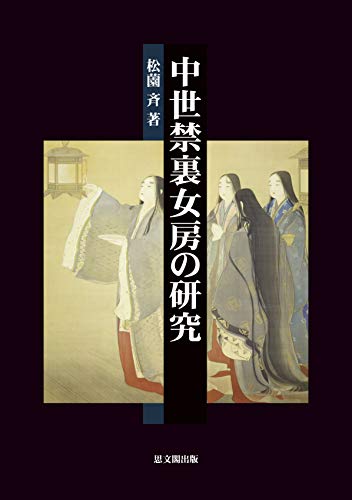1 0 0 0 日本語-モン語辞典
- 著者
- 坂本恭章著
- 出版者
- 東京外国語大学アジア・アフリカ言語文化研究所
- 巻号頁・発行日
- 1996
1 0 0 0 チャム語中のクメール語的要素
- 著者
- 坂本 恭章
- 出版者
- 日本言語学会
- 雑誌
- 言語研究 (ISSN:00243914)
- 巻号頁・発行日
- vol.1969, no.55, pp.95-97, 1969
1 0 0 0 アジア・アフリカの諸言語の電算機処理
- 著者
- 坂本 恭章
- 出版者
- 国立研究開発法人 科学技術振興機構
- 雑誌
- 情報管理 (ISSN:00217298)
- 巻号頁・発行日
- vol.22, no.7, pp.519-525, 1979
アジア・アフリカ地域を対象とした人文科学系の研究を行っている全国国立大学共同利用研究所である東京外国語大学アジア・アフリカ言語文化研究所が実施している言語情報処理について概説。アジア・アフリカの諸言語は特殊な書記体系であることから,電算機への入力および出力をするために各文字に基本文字と付加文字との区別を与え,基線,基点,セット位置という概念を導入することと,1つの文字パターンを15分割した分割パターンコードなどを文字属性にもった文字として処理していることを解説。さらに,現状での諸言語のデータ入力方法,単語を辞書順配列するためのコード変換および単語の用例の出力方式などについて記述。
1 0 0 0 言語の理解度と語彙量との関係:カンボジア語のテキストを例として
- 著者
- 坂本 恭章
- 出版者
- 日本言語学会
- 雑誌
- 言語研究 (ISSN:00243914)
- 巻号頁・発行日
- vol.1966, no.49, pp.43-54, 1966
1 0 0 0 タイ語のthammaj<なぜ>と不随意動詞の下位分類
- 著者
- 坂本 恭章
- 出版者
- 東京外国語大学アジア・アフリカ言語文化研究所
- 雑誌
- アジア・アフリカ言語文化研究 (ISSN:03872807)
- 巻号頁・発行日
- no.46, pp.p409-414, 1994
1 0 0 0 モンの民話・伝説
- 著者
- 坂本 恭章
- 出版者
- 東京外国語大学アジア・アフリカ言語文化研究所
- 雑誌
- アジア・アフリカ言語文化研究 (ISSN:03872807)
- 巻号頁・発行日
- no.7, pp.225-236, 1974-01
1 0 0 0 タイのモン語
- 著者
- 坂本 恭章
- 出版者
- 東京外国語大学
- 雑誌
- アジア・アフリカ言語文化研究所通信 (ISSN:09108068)
- 巻号頁・発行日
- vol.19, 1973-08-31
1 0 0 0 タイ語の単純質問文と非難文
- 著者
- 坂本 恭章
- 出版者
- 東京外国語大学
- 雑誌
- アジア・アフリカ言語文化研究所通信 (ISSN:09108068)
- 巻号頁・発行日
- vol.49, pp.5-6, 1983-11-25
1 0 0 0 IR カンボジア語標準語とプノンペン方言
- 著者
- 坂本 恭章
- 出版者
- 京都大学東南アジア研究センター
- 雑誌
- 東南アジア研究 (ISSN:05638682)
- 巻号頁・発行日
- vol.6, no.2, pp.290-320, 1968
以上, STとPPとで語形の異なるものについての対応法則と, その実例をあげたが, ここにその要点をまとめるとともに, STとPPとの主な相違点であるところのPPには, a) 低昇り声調があるb)/r/が稀にしか現われないc)/eə/があるd)/ie/がないe) /N (/m/ を除く) C/の形の子音音素結合があるf) /mC/, /IC/, /kη/の形の子音音素結合がないg) 2音節語の第1音節の構造が簡単で, 短母音で終わる音節がある等の諸点との関係を明らかにしよう。 1. STの2音節の第1音節とPP 表の左欄にSTの音節型, 上にその音節頭音を示し, 表中にそれに対応するPPを示した。〔・〕で音節の切れ目を示し, これが左についているものは, PPでは単音節語が対応することを示す。空欄は対応例のないものである。この図から明らかなように, STの第1音節に対しては,PPでは /Ca/の形の短母音音節か, または /NC-/ という形の単音節語頭の /N/ が対応している。この短母音で終わる音節も, /NC/ という子音音素結合も, STには現われないものである。2. STの子音音素結合[table]この結果, PPでは/kη/, /mC/, /IC/ の形の子音音素結合がなくなる。 3.単音節語および2音節語の第2音節で[table]という対応がありこの結果, STで /ie/ と /ia/ との対立で示された語が, PPではシノニムとなっている。
1 0 0 0 戦国期公家社会と荘園経済
1 0 0 0 OA 〈プロジェクト研究〉続・戦国時代禁裏女房の基礎的研究 ―下級女房たちを中心に―
- 著者
- 松薗 斉
- 出版者
- 愛知学院大学人間文化研究所
- 雑誌
- 人間文化 : 愛知学院大学人間文化研究所紀要 = Transactions of the Institute for Cultural Studies, Aichi Gakuin University NINGEN BUNKA (ISSN:09108424)
- 巻号頁・発行日
- no.30, pp.105-127, 2015-09-20
1 0 0 0 IR 動画を使った内股の相違の発見 : 代表的柔道家の内股の相違
- 著者
- 岡田 龍司 村元 辰寛 徳安 秀正 岡崎 祐史 穴井 隆将 倉賀野 哲造
- 出版者
- 近畿大学教養・外国語教育センター
- 雑誌
- 教養・外国語教育センター紀要. 一般教養編 Kinki University, Center for Liberal Arts and Foreign Language Education journal (ISSN:24322814)
- 巻号頁・発行日
- vol.6, no.1, pp.13-21, 2016
"Uchi-mata" difference was discovered by using available motion pictures.The motion pictures were disassembled into frame data called AVI,which is a file format for storing audio and video information developed by Microsoft Corp.The motions performed by participants while using Judo standin " Uchimata" were analyzed using a software system based on "Open CV",which is an open source library for computer vision and image processing developed by Intel Corp.The positions of parts of the body were indicated manually on to the AVI pictures based on the "frame by frame playback" technique, then put into a computer. The compensation of pixel values to the real space size was performed by using the known length of the" tatami" in the AVI picture.By repeating these,the positions of the body were traced corresponding to the frame rate.The compensated positional data of the body was gathered and then disassembled into x direction-time data and y direction-time data to calculate velocity. In this manner,the velocity of the specified body parts of the thrown opponent were calculated.The subjects selected were two leading Judo men.When he threw his opponent down,his motion of his stand technique of" Uchi-mata" was analyzed.This is a case study of motion analysis of Judo using available motion pictures.We have given an example of an analysis method for Judo from an engineering point of view.
1 0 0 0 IR 全日本柔道選手権大会の試合価値についての一考察
- 著者
- 瀧本 誠 Takimoto Makoto
- 出版者
- 駒澤大学
- 雑誌
- 駒澤大学総合教育研究部紀要 = Journal of the Faculty of Arts and Sciences (ISSN:18818110)
- 巻号頁・発行日
- no.12, pp.21-35, 2018-03
1 0 0 0 OA 〈実践・事例報告〉動画を使った内股の相違の発見― 代表的柔道家の内股の相違 ―
- 著者
- 岡田 龍司 村本 辰寛 徳安 秀正 岡崎 祐史 穴井 隆将 倉賀野 哲造
- 出版者
- 近畿大学教養・外国語教育センター
- 雑誌
- 近畿大学教養・外国語教育センター紀要. 一般教養編 = Kinki university center for liberal arts and foreign language education journal. Liberal arts edition (ISSN:24322814)
- 巻号頁・発行日
- vol.6, no.1, pp.13-21, 2016-03-31
“Uchi-mata” difference was discovered by using available motion pictures.The motion pictures were disassembled into frame data called AVI,which is a file format for storing audio and video information developed by Microsoft Corp.The motions performed by participants while using Judo standin “ Uchimata” were analyzed using a software system based on “Open CV”,which is an open source library for computer vision and image processing developed by Intel Corp.The positions of parts of the body were indicated manually on to the AVI pictures based on the “frame by frame playback” technique, then put into a computer. The compensation of pixel values to the real space size was performed by using the known length of the“ tatami” in the AVI picture.By repeating these,the positions of the body were traced corresponding to the frame rate.The compensated positional data of the body was gathered and then disassembled into x direction-time data and y direction-time data to calculate velocity. In this manner,the velocity of the specified body parts of the thrown opponent were calculated.The subjects selected were two leading Judo men.When he threw his opponent down,his motion of his stand technique of“ Uchi-mata” was analyzed.This is a case study of motion analysis of Judo using available motion pictures.We have given an example of an analysis method for Judo from an engineering point of view.
- 著者
- 中山 紗織 會田 宏
- 出版者
- 一般社団法人 日本体育・スポーツ・健康学会
- 雑誌
- 体育学研究 (ISSN:04846710)
- 巻号頁・発行日
- vol.64, no.1, pp.285-301, 2019-06-17 (Released:2019-06-25)
- 参考文献数
- 52
This study aimed to clarify the philosophy of children’s handball coaches in Japan and Germany in terms of individual player development, content and methods of training, and game performance. In addition, we compared player development and enhancement between top children’s handball teams from Japan (“Hokuden”: coach, Mr. Tanaka) and Germany (“Leipzig”: coach, Mr. Andrä) by interviewing the coaches and analyzing the teams’ game performances. The main results were as follows: 1) While the philosophy of “individual player development” was to let young players acquire basic skills in handball for both Hokuden and Leipzig, differences were found between Mr. Tanaka’s and Mr. Andrä’s approaches, in that mastering skills was important for Mr. Tanaka, whereas gaining a variety of experiences was important for Mr. Andrä. 2) No significant differences were found in the effectiveness of positional attacks (total goals divided by the total number of attacks in a match), effectiveness of shots (total goals divided by the total number of shots in a match), and percentage of technical errors (total technical errors divided by the total number of attacks in a match), suggesting that there are no characteristic outcomes, even though they play under different rules. 3) In Hokuden, individual roles were divided according to each phase of organized attack and defense, and each player tried to fulfill a role as a part the team, whereas in Leipzig, players tried to solve issues in order to score a goal through the entire phase of organized attack and defense by themselves, suggesting that both coaches focused on “individual player development” but with different target images.
1 0 0 0 IR 日本昔話における対立の構造--隣モチ-フを中心に
- 著者
- 川森 博司
- 出版者
- 国立歴史民俗博物館
- 雑誌
- 国立歴史民俗博物館研究報告 (ISSN:02867400)
- 巻号頁・発行日
- no.32, pp.p1-21, 1991-03
The two main topics of Japanese folktales are marriage and fortune-making. This thesis analyzes the latter type of folktales in an attempt to reveal the spirit of people who lived in a typical Japanese village community to hand down these pieces of folktales.Significant among the type of fortune-making folktales are stories characterized by antagonism between I-the main character who makes a fortune and II-another character who fails to make a fortune. The antagonism is expressed in various combinations of conflicting parties such as a man and his wife, a man and his neighbor, or a man and his real brother or stepbrother, among which the preferred one in Japan is that of a man and his neighbor.In the Amami and Okinawa islands, however, a type of antagonism between 'a man and his brother' appears in a high ratio depending on some kinds of stories. Detailed analysis of folktales in the Amami and Okinawa islands is expected to identify the difference from folktales in the main land of Japan so that the nature of antagonism between characters in Japanese folktales may be better understood.The Japanese features may also be more clearly understood by comparing her folktales with that of other nations to reveal their similarities and differences. For example, in Korea, a type of antagonism between 'a man and his brother' appears more frequently in their folktales. More careful comparison, however, requires a classified collection of materials from various countries, based on which international comparison should be made.The fact that a type of antagonism between 'a man and his neighbor' is the preferred type in Japanese folktales indicates that the relationship with neighbors was of main concern to people in a typical Japanese village community. Folktales provide valuable resources for investigating their inner world.
1 0 0 0 IR 太宰春台と「産語」
- 著者
- 永吉 雅夫
- 出版者
- 追手門学院大学文学部
- 雑誌
- 追手門学院大学文学部紀要 (ISSN:03898695)
- 巻号頁・発行日
- no.23, pp.p314-301, 1989

